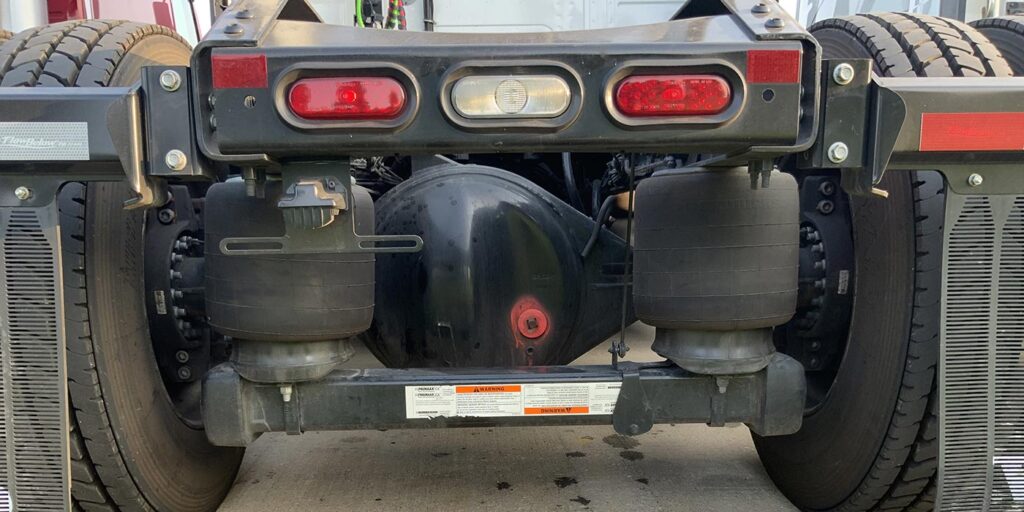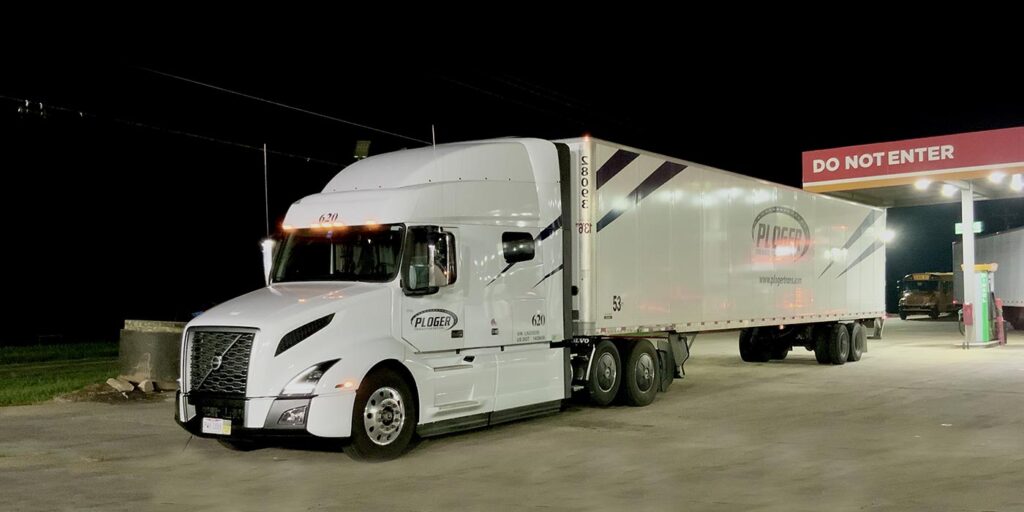Joel Morrow has long been a proponent of pushing fuel efficiency possibilities. He’s what I’d call a Super Spec’er. Morrow charges headlong into the nitty gritty equipment details to eke out another fraction of a percentage of fuel efficiency because if he does that enough times throughout a spec, it turns into big bottom-line savings. As the senior driver and vice president of equipment procurement at Ploger Transportation, a regional carrier fielding more than 40 tractors and 100 trailers and specializing in the food grade industry, one of his most interesting current spec’ing strategies is 6×2 axles.
That’s right: the axle configuration that saw a big push from OEMs and suppliers in 2016 and then quietly found its niche as the industry moved back to a 6×4 focus is where Morrow sees an opportunity to mine for even more fuel efficiency.
“With the 6×2 concept, I think we’ve missed a lot of the finer points that you need to make this work,” Morrow said. “The industry is still using torque-reactive suspensions, for example. Basically, the industry took a 6×4 and ripped the drive shaft out of it. That doesn’t really work with the dynamics of the 6×2; they call for a little more finesse in the suspension.”
Morrow began using non-torque reactive suspensions—essentially heavier, vocational-focused non-torque suspensions that he puts to work in over-the-road applications.
“When we use these improved suspensions, traction gets a lot better; tire life gets better; handling gets better,” he said, and went on to explain that traditional torque-reactive suspensions on linehaul tractors create “dynamic whip” in 6×2 configurations that impacts traction and handling. Morrow said that non-torque reactive suspensions control the dynamic whip to a greater degree and improve the ride for the driver.
“Single transverse-mounted torque rod that you find on that torque reactor suspension tends to tail steer the truck,” he explained. “A vocational-type suspension with either V-rods controlling the drive axle in the back or multiple torque rods helps to distribute that torque and twisting evenly amongst both sides of the frame, and it creates a much better ride.”
This equipment move addresses the main concern with 6x2s: Not having enough traction and torque when you need to get a load moving.
“When the initial 6x2s hit the market from the majority of manufacturers, there was a lot of pushback on them from drivers—the powertrains just didn’t feel right,” Morrow said. “As a driver, we call it nervousness. The 6×2 configuration has a nervous feeling to it. When you have the multiple torque rod arrangement, it tames that nervous feeling that you kind of get in the back of the 6x2s.”

The non-reactive torque suspension breakthrough comes from decades of experience, with Morrow running the axle configuration since 1968. Today, Morrow depends on the Dana S175 axle in 6×2 configurations.
“It’s lighter weight, and that allows me to put some more beef into the suspension and get the performance that I’m looking for without having a weight penalty,” he said.
As far as winning over drivers, Morrow said it’s all about having a positive experience with the right powertrain spec.
“There is a preconceived notion of what a 6×2 is when a driver comes in, and it’s almost always negative. With the newest configurations, with the correct suspensions, with the correct axle positions, the correct axle capacities, the driver takes the truck out, and they say, ‘I can’t believe this is a 6×2. It rides so much better. It handles so much better.’
“And, of course, we see the fuel efficiency improvement on the business end.”
Yeah, about that…
The fuel efficiency proof in the 6×2 pulling power.
The focus on 6×2 is driven, primarily, by one fuel-efficiency boosting opportunity: downspeeding.
“We’re taking downspeeding to extreme levels,” Morrow said.
For those who need a quick refresher on axle ratios and downspeeding, head here:
Morrow’s downspeeding focus is on reducing parasitic drag throughout the driveline. “The less parasitic drag we can get the driveline, [the more it] complements the whole concept of downspeeding the engine and reducing drag in the engine through slower piston speed,” he said. This goes for both 6×4 and 6×2 configurations, but 6×2 axles offer faster ratios—which, in turn, allow the engine to cruise at a lower RPM, thus saving fuel.
“We’re also noticing with 6x2s that the gearing options we have available to us mean less parasitic drag, which can increase productivity,” he explained. “We average a little higher speed and we’re faster up the hills because we’re not losing horsepower and torque to the ground, and when that suspension is set up correctly, we can transmit it efficiently.”
Morrow noted that to effectively implement downspeeding, especially in 6×2 configurations, it’s important to look at the drivetrain as a whole, not just the pieces and parts.
“It’s really important to have a torque management strategy. If you have an integrated powertrain like we do with a Volvo engine and the Volvo I-Shift transmission, it’s important to understand where the shift points need to be so we’re not breaking traction as we come up through the gears,” he said.














